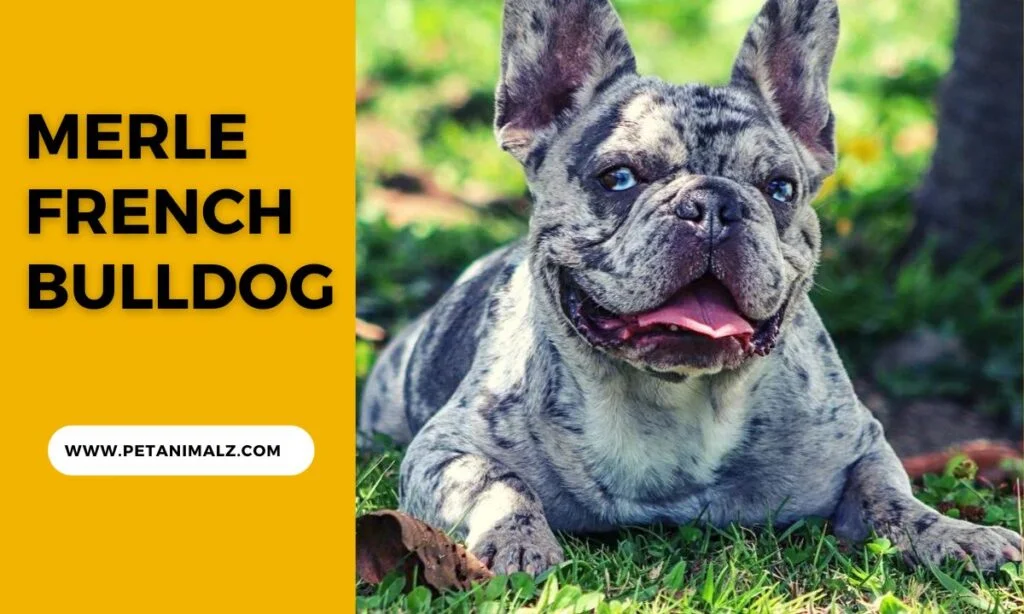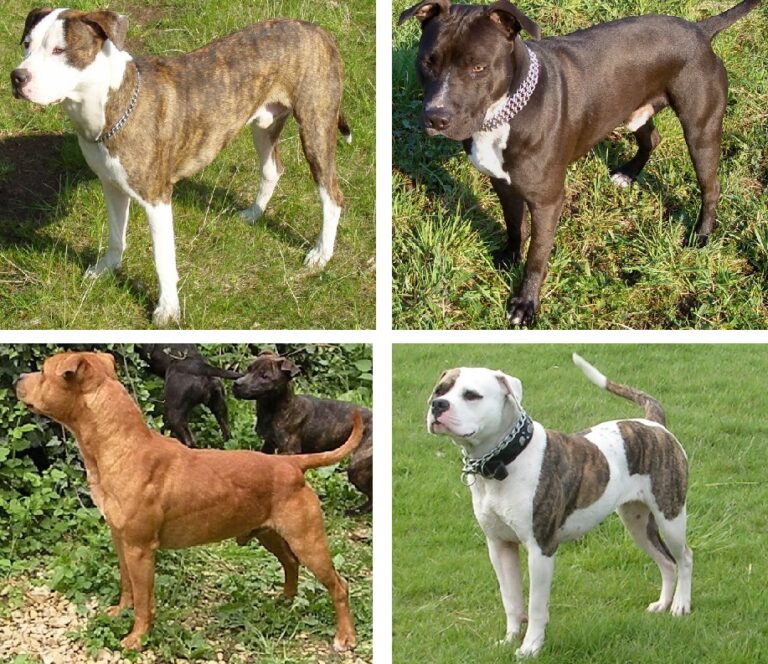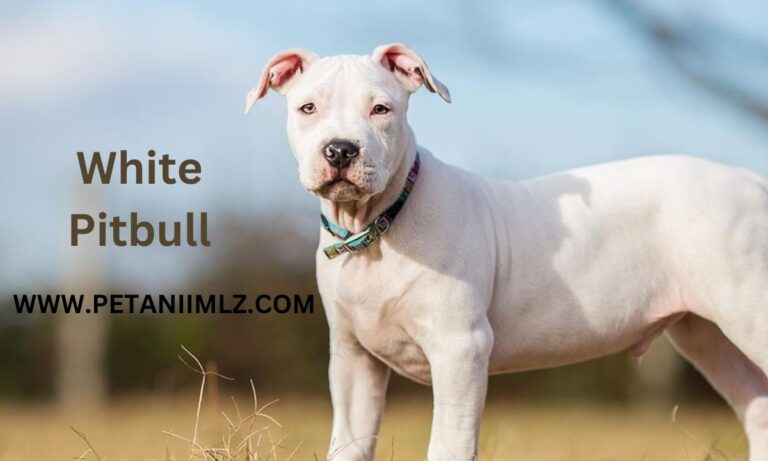Merle French Bulldog: Your Complete Guide
Introduction
The visually beautiful range of the French bulldog is known as Merle French bulldogs or Merle Frenchies. The French bulldog itself has a rich history dating back to the 1800s when it was bred as a smaller, companion version of the English bulldog which quickly gained popularity in France. However, the merle coat pattern is not typical for French Bulldogs; it came about through cross-breeding with other breeds that have merle patterns. This special coat includes both dark and light parts making it look like a patchwork, often with different eye colors ranging from striking blue and heterochromia (when each eye has a different color).
Despite their unique appearances, however, the Merle gene can also result in various health complications such as problems with hearing or sight. Breeding two Merle French Bulldogs increases the chance of severe medical issues like deafness and blindness due to having two copies of the Merle gene. Therefore, ethical breeding practices should be put in place to ensure that these dogs stay healthy and fit. Despite these controversies and health complications, it remains an exotic and much sought-after breed among fans of the original breed.
History and Origin of the Merle French Bulldog
- The French Bulldog, affectionately known as the “Frenchie,” has a rich history that dates back to the 1800s. Originally bred as a toy version of the English Bulldog, they quickly became a favorite in France.
- The Merle gene, responsible for the distinct coat pattern, isn’t native to French Bulldogs. Its introduction to the breed has been a topic of much discussion, with some believing it came from crossbreeding with other merle-patterned breeds.

Physical Characteristics of the Merle French Bulldog
- The Merle coat pattern is truly a sight to behold. It’s characterized by a mottled patchwork of dark and light areas, giving the dog a unique, almost mystical appearance.
- But it’s not just the coat that can vary. Merle French Bulldogs can have striking eye colors, ranging from blue to one eye being different from the other (heterochromia).
- While the Merle variation stands out, French Bulldogs come in a plethora of colors, including brindle, fawn, and pied. However, the Merle’s distinct pattern sets it apart from the rest.
Health Concerns and Controversies
- The beauty of the Merle coat comes at a price. The gene responsible for this pattern can also bring about genetic issues. When two Merle genes are present (one from each parent), it can lead to health problems, including deafness and blindness.
- Apart from the genetic concerns, Merle French Bulldogs, like their non-merle counterparts, can face common health issues such as hip dysplasia, brachycephalic syndrome, and certain heart conditions.
- The breeding of Merle French Bulldogs has stirred the pot in the canine community. Ethical concerns arise when breeders prioritize the coat pattern over the dog’s health, leading to inbreeding and other questionable practices.
Merle French Bulldogs, often referred to as “Merle Frenchies,” are a unique and visually striking variation of the French Bulldog breed
. However, the merle gene, responsible for their distinct coat pattern, is also associated with certain health issues. It’s essential for potential owners and breeders to be aware of these concerns to ensure the well-being of these dogs.
Merle Frenchies are prone to the following…
- Skin Sensitivity: Due to the lack of pigmentation in some areas, Merle Frenchies might have increased sensitivity to the sun and can be more prone to sunburn.
- Increased Risk of Sunburn: The areas of lighter pigmentation on their coat can make them more susceptible to sunburn, which can lead to other skin problems if not addressed.
Merle Frenchie Eye Problems
The merle gene can also affect the eyes of the French Bulldog, leading to:
- Heterochromia: This is a condition where the dog has two different colored eyes. While it can be purely cosmetic, it’s essential to monitor for any vision problems.
- Microphthalmia: This is a condition where one or both eyes are smaller than usual. It can lead to vision problems or blindness.
- Colobomas: These are notches or gaps in parts of the eye, which can affect the iris, retina, choroid, or optic disc. This can also lead to vision problems.
Merle Frenchie Deafness
Deafness is another concern in Merle French Bulldogs:
- Bilateral Deafness: This means the dog is deaf in both ears. It can be challenging to train and care for dogs with this condition, but they can still lead happy lives with the right support.
- Unilateral Deafness: This means the dog is deaf in one ear. It’s less severe than bilateral deafness, but still requires special attention.
- Higher Risk: Merle Frenchies have a higher risk of being born deaf, especially if they have large areas of white on their head.
Regular Frenchie Health Issues
Apart from the merle-specific concerns, French Bulldogs, in general, are prone to:
- Brachycephalic Syndrome: Due to their short noses, they can have breathing difficulties, especially in hot weather or during physical exertion.
- Hip Dysplasia: This is a joint problem that can lead to arthritis or pain in the hips.
- Intervertebral Disc Disease (IVDD): This affects the discs in the spine, leading to pain, weakness, or paralysis.
Caring for a Merle French Bulldog
- Dietary Needs: Just like any other Frenchie, the Merle variant requires a balanced diet. However, due to their unique genetic makeup, some might have specific dietary restrictions or needs. Always consult with a vet to tailor a diet that’s right for your pup.
- Exercise and Playtime: While they’re not the most active breed, Merle French Bulldogs still need their daily dose of play. Short walks and indoor play sessions are ideal, given their brachycephalic nature.
- Regular Health Check-ups and Vaccinations: Given the potential health concerns:
- Regular vet visits are crucial.
- Ensure they’re up-to-date with vaccinations.
- Regular screenings for common health issues are a must.
Training and Socialization
- Importance of Early Socialization: Introducing your Merle Frenchie to various environments, people, and other animals from a young age is crucial. It helps in developing a well-rounded and confident adult dog.
- Training Tips Specific to Merle French Bulldogs: While they share many traits with other Frenchies, their unique appearance might sometimes attract more attention. Training them to be calm and composed, especially when being approached, is essential.
How to Spot a Merle Frenchie
Merle French Bulldogs, commonly known as Merle Frenchies, are a unique and visually striking variation of the French Bulldog breed. Their distinct coat patterns and colors set them apart. Here’s how you can identify them:
There’s Lots of Variation
- Merle Frenchies don’t have a one-size-fits-all appearance.
- The merle gene causes a mottled pattern in the coat.
- This pattern can vary greatly from one dog to another.
Common Merle Colors
- Blue merle: A diluted black color with patches of black.
- Chocolate merle: A brown base with darker brown patches.
- Black merle: A black base with patches of gray or silver.
What a Merle French Bulldog Looks Like
- They have a unique mottled or dappled coat pattern.
- Their eyes can be any color, but it’s not uncommon to see blue or heterochromia (two different colored eyes).
- They often have a more pronounced and distinct facial mask.
Merle French Bulldog Traits
- Lively and playful temperament, similar to other French Bulldogs.
- Due to their unique coat, they might require more grooming.
- They can have potential health issues related to the merle gene.
Types of Merle Frenchies
Understanding the different types of Merle Frenchies is crucial for potential owners and breeders.
Merle Variations Include
- Blue merle
- Chocolate merle
- Black merle
- And sometimes combinations of the above.
Different Types of Merle Frenchies Explained
- Blue Merle: Predominantly gray with black patches.
- Chocolate Merle: Brown base with darker brown patches.
- Black Merle: Black base with gray or silver patches.
How Much are Merle French Bulldog Puppies?
- The price can vary widely based on factors like lineage, coat quality, and breeder reputation.
- On average, they can be more expensive than standard French Bulldogs due to their rarity and unique appearance.
Are Merle Frenchies Rare?
- Yes, Merle Frenchies are considered rare.
- Their unique coat pattern and colors make them highly sought after.
How are Merle French Bulldogs Bred?
Breeding Merle French Bulldogs requires a deep understanding of genetics to ensure healthy litters.
Merle Genotypes
- The merle pattern is caused by a dominant gene.
- Dogs with one copy of the gene will show the merle pattern.
- Those without the gene won’t have the pattern.
Merle Inheritance
- If one parent is merle and the other isn’t, there’s a 50% chance the puppies will be merle.
- If both parents are merle, the chance increases, but this can lead to health issues.
Double Merle Breeding
- Breeding two merle dogs can result in double merle puppies.
- Double merles can have serious health issues, including deafness and blindness.
Merles Should be Bred with Other Colors
- To reduce the risk of producing double merles, it’s recommended to breed a merle Frenchie with a non-merle Frenchie.
- This ensures a healthier litter and reduces potential health risks.
FAQs
Are Merle French Bulldogs purebred?
While the Merle pattern isn’t native to French Bulldogs, it’s possible for a Merle Frenchie to be purebred, depending on its lineage.
How much does a Merle French Bulldog cost?
Prices can vary widely based on factors like lineage, breeder reputation, and location. They typically range from $2,000 to $10,000.
Is it ethical to breed Merle French Bulldogs?
This is a topic of debate. Ethical concerns arise when health is compromised for appearance. Always choose breeders who prioritize health and well-being over aesthetics.
How to identify a responsibly bred Merle French Bulldog?
Look for breeders who conduct health screenings, offer detailed lineage information, and are transparent about their breeding practices.
What is a merle French bulldog?
A Merle French Bulldog is a variation of the standard French Bulldog but has a distinct coat pattern characterized by a mottled patchwork of dark and light areas. This unique pattern is due to the presence of the Merle gene.
Are merle dogs good or bad?
Merle dogs are not inherently “good” or “bad.” The Merle gene affects only the coat pattern. However, when two Merle dogs are bred together, it can lead to health issues in the offspring, such as deafness or blindness.
Conclusion
Undoubtedly, the Merle French Bulldog is charming; however, prospective parents should be cautious of this breed class. These dogs are much sought after because they have unique merle coat patterns, which unfortunately come with a risk of health issues; such as deafness, vision problems, and skin sensitivities. The situation is worsened when two merle dogs are mated causing severe genetic issues. It is therefore important to practice ethical breeding to minimize these risks, where preferred by nearly all responsible breeders is the health and welfare of the dog rather than appearance.
Prospective owners should do thorough research and identify breeders who carry out appropriate health testing and for whose breeding methods they are honestly concerned. Apart from being very eye-catching animals, owning a Merle Frenchie also means making sure that their lives are not spent suffering due to their peculiar traits. It is by making wise choices that the breed can continue to be kept healthy and beautiful for generations to come.





